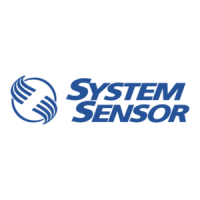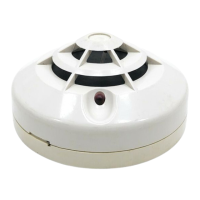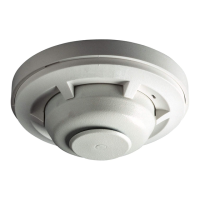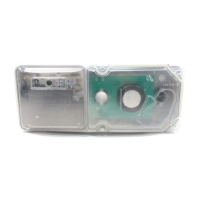THE LIMITATIONS OF HORN/STROBES
The horn and/or strobe will not work without power. The horn/strobe gets its power
from the fire/security panel monitoring the alarm system. If power is cut off for any
reason, the horn/strobe will not provide the desired audio or visual warning.
The horn may not be heard. The loudness of the horn meets (or exceeds) current
Underwriters Laboratories’ standards. However, the horn may not alert a sound
sleeper or one who has recently used drugs or has been drinking alcoholic beverages.
The horn may not be heard if it is placed on a different floor from the person in hazard
or if placed too far away to be heard over the ambient noise such as traffic, air
conditioners, machinery or music appliances that may prevent alert persons from
hearing the alarm. The horn may not be heard by persons who are hearing impaired.
NOTE: Strobes must be powered continuously for horn operation.
The signal strobe may not be seen. The electronic visual warning signal uses LEDs
with associated lens system. It flashes at least once every second. The strobe must
not be installed in direct sunlight or areas of high light intensity (over 60 foot candles)
where the visual flash might be disregarded or not seen. The strobe may not be seen
by the visually impaired.
The signal strobe may cause seizures. Individuals who have positive photoic
response to visual stimuli with seizures, such as persons with epilepsy, should avoid
prolonged exposure to environments in which strobe signals, including this strobe, are
activated.
The signal strobe cannot operate from coded power supplies. Coded power
supplies produce interrupted power. The strobe must have an uninterrupted source of
power in order to operate correctly. System Sensor recommends that the horn and
signal strobe always be used in combination so that the risks from any of the above
limitations are minimized.
FCC Statement
This equipment has been tested and found to comply with the limits for a Class B
digital device, pursuant to part 15 of the FCC Rules. These limits are designed to
provide reasonable protection against harmful interference in a residential installation.
This equipment generates, uses and can radiate radio frequency energy and, if not
installed and used in accordance with the instructions, may cause harmful interference
to radio communications. However, there is no guarantee that interference will not
occur in a particular installation. If this equipment does cause harmful interference to
radio or television reception, which can be determined by turning the equipment off
and on, the user is encouraged to try to correct the interference by one or more of the
following measures:
-Reorient or relocate the receiving antenna.
-Increase the separation between the equipment and receiver.
-Connect the equipment into an outlet on a circuit different from that to which the
receiver is connected.
-Consult the dealer or an experienced radio/TV technician for help.
This Class B digital apparatus complies with Canadian ICES-003.
This symbol (shown left) on the product(s) and / or accompanying documents means that used electrical and electronic products should not be mixed with general
household waste. For proper treatment, recovery and recycling, contact your local authorities or dealer and ask for the correct method of disposal.
Electrical and electronic equipment contains materials, parts and substances, which can be dangerous to the environment and harmful to human health if the waste of
electrical and electronic equipment (WEEE) is not disposed of correctly.
Supplemental Information

